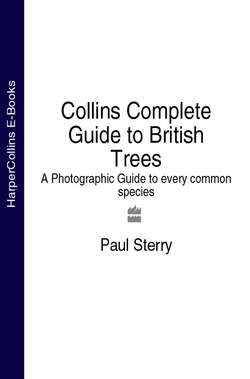Читать книгу Collins Complete Guide to British Trees: A Photographic Guide to every common species - Paul Sterry - Страница 10
WOODY TISSUE
ОглавлениеThe principal way in which a tree or shrub differs from other, herbaceous, members of its family is its ability to produce woody tissue; this serves to conduct materials around the plant, and leads to the production of permanent shoots. In the case of perennial herbaceous plants, the shoots die back at the end of each growing season, or in the case of annuals, the whole plant dies and a new generation arises from seeds formed by the previous generation.
Trees and shrubs have an important layer of cells enclosing shoots, buds and roots, called the cambium layer. This is an active layer that is constantly producing new cells on its inner and outer surfaces. Cells that grow on the inside of the cambium develop into woody tissue or xylem; this conducts water from the roots to the shoots, buds and leaves. Eventually it forms the bulk of the trunk and branches of the tree as a new layer is laid down each year. Cells that grow on the outside of the cambium form the conductive tissue, known as phloem, that carries sugars from the leaves down to the roots. This vital layer must not be damaged. If a complete ring of this tissue is cut away from the trunk of a tree the roots will be deprived of nourishment from the leaves and the tree will eventually die.
A cross section through a Pedunculate Oak trunk reveals its many layers.
